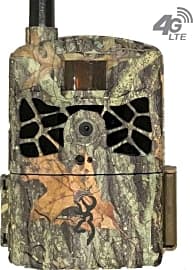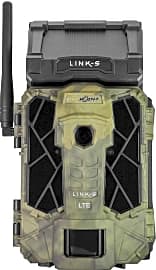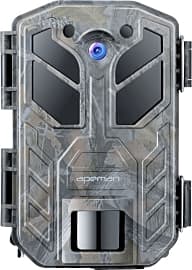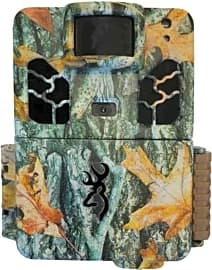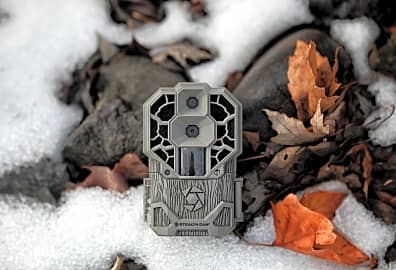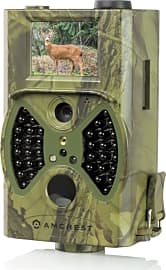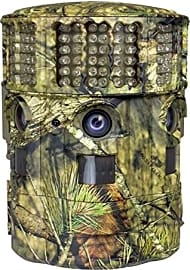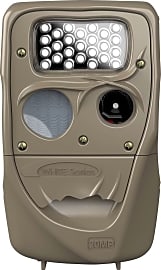The 10 Best Game Cameras

This wiki has been updated 43 times since it was first published in March of 2015. Ideal for researchers, wildlife welfare monitors, and nature photographers, these game cameras will let you covertly and remotely capture still and video images of your target on any trail. They are specially designed with silent, or near silent, triggers to reduce the possibility of spooking animals, and can be left outside for months at a time, shooting day and night, rain or shine. When users buy our independently chosen editorial selections, we may earn commissions to help fund the Wiki.
Editor's Notes
January 13, 2020:
Given the remote locations in which so many of these are set up, the convenience of checking in on a given model's progress without having to hike out to it is hard to understate. And with mobile connectivity becoming something of an expectation among consumers thanks to things like home security cameras, including models in this latest ranking with cellular connectivity was an absolute necessity. That doesn't mean it was a sole criteria for advancement on the list, however, as one of our top models, the Reconyx UltraFire Gen2 Covert IR, demonstrates. It's important to remember that cellular models will have an added built-in cost through whatever provider you use to connect the device to a nearby tower. And if you're shooting in an area that's remote enough, you might not have any towers within striking distance, so be sure to look into the distance to the nearest tower from your intended location.
Beyond that, we scrutinized things like resolution, with a big push toward 1080p as a baseline. We did keep a couple of 720 options around, however, mainly as a way for users who might not require that much clarity to save a little money. In the case of the Moultrie Panoramic 180i, however, keeping it around was less about saving money and more about the unusual nature of its 180-degree feature. Resolution is, however, why we jettisoned the updated version of the Reconyx HyperFire HC500 from our previous ranking, as its newer model still only shoots in 720, and as the company had better offerings with higher resolutions to choose from.
Where The Wild Things Are
For example, the camera can document activity patterns of a particular animal that include the times of day it travels to a certain location.
While conventional cameras require a photographer to be present and relatively close to the objects he intends to document, these cameras are not practical for wildlife researchers or for documenting rare species that may not present themselves right out in the open. Elusive species are not likely to allow the photographer to stage a scene for that perfect snapshot. This type of photography requires a more specialized camera capable of being activated remotely to capture photographs of animals without human involvement. This is where the game camera becomes a necessity.
Also referred to as a trail camera or camera trap, the game camera is a weatherproof, remotely or automatically-activated device that is capable of taking snapshots or videos of animals in their natural habitats when the photographer is not around. The device is built for extended, unmanned use outdoors and leverages a combination of infrared sensor and and motion sensor technology to act as an image trigger, which the camera uses to initiate the capture of either single or multiple snapshots or videos of wildlife. The trigger ensures that the target animal is captured by the camera's field of vision as soon as the animal crosses into its line of sight and is in full view.
The game camera uses a passive infrared sensor designed to detect temperature changes that occur when an animal is in motion. When this temperature fluctuation occurs, the camera begins taking snapshots automatically. PIR sensors have a long detection range and, depending on the surrounding environment, can be adjusted automatically by the camera itself or manually by the photographer. The motion capture on many game cameras can also be delayed at various time intervals so that the device doesn't take a snapshot every time its trigger fires.
These devices have several applications. Most common uses for game cameras include ecological and behavioral studies. For example, the camera can document activity patterns of a particular animal that include the times of day it travels to a certain location. It is also useful for recording animal migrations or quantifying the number of species inhabiting a specific area. The camera can also be used for determining the best hunting trails.
The major advantage to this camera is in its ability to record visual data and natural behavior over time without physically trapping the animal or influencing its environment. This allows for a much more accurate study of animal behavior when it hasn't been disturbed or alerted to the presence of a human being. It also makes possible the discovery and observation of more elusive and critically endangered species. For that reason, the game camera can also be leveraged as a tool for raising public awareness of the need for conservation efforts in areas where certain animals may be succumbing or decreasing in numbers due to deforestation or habitat destruction.
What Was Once Lost Can Now Be Found
Since a game camera will be spending extended time among the elements, it should be as durable and weatherproof as possible. For that reason, you'll also want to determine the best location for the device to remain undisturbed by the local wildlife. If the camera has a flash feature, it should be inconspicuous. Bright flashes will alarm the wildlife you wish to photograph, which is why many game cameras have built-in infrared flash units for delivering extra illumination while remaining virtually unnoticed by the target.
For that reason, you'll also want to determine the best location for the device to remain undisturbed by the local wildlife.
The image resolution of the camera's sensor should be an additional determining factor in one's choice. The greater number of megapixels a game camera has, the better the image quality will be. This means that a wildlife researcher can pick out the finest detail in their photographs more easily than they could from a camera with a lower resolution. The ability to adjust the resolution on the camera is also important in order to avoid running out of memory during extended use.
Consider the size and capacity of the camera's battery. If you don't mind spending a bit of extra time during the initial setup, then you can leverage a larger battery for extended periods of undisturbed camera operation. A larger battery also means that you won't have to return to the camera site as often to change or recharge it.
Many game cameras offer on-board black and white text monitors for controlling their setting menus. But if the ability to view your images on the device is equally important to you, then definitely try to find one with a larger LCD color screen that allows you to see your snapshots before and after they've been taken.
A Brief History Of Game Cameras
The first cameras dedicated to capturing images of wildlife without a human presence date as far back as the 1890s. Photographer George Shiras is credited as the pioneer for the game camera movement and the popularity of wildlife photography. Shiras originally used trip wires (suspended string or ropes) designed to trigger a flash and a remotely-controlled camera (equipped with a flash bulb) to take snapshots of animals on film in their natural habitats. His work was later published in National Geographic Magazine.
The first cameras dedicated to capturing images of wildlife without a human presence date as far back as the 1890s.
One of the first scientific uses for the game camera occurred in the 1920s by American ornithologist Frank M. Chapman who was studying the large species located on Barro Colorado Island in Panama. Chapman used a trip wire system similar to Shiras's design to complete his work.
Between the 1920s and 1990s, game cameras lost some of their popularity due to both the technological limitations associated with many of their batteries as well as unreliable trip mechanisms. However, with the development of infrared triggers in the 1990s, followed soon after by the digital camera, the popularity of both game cameras and wildlife photography exploded and they are still going strong today, particularly from an educational point of view.



